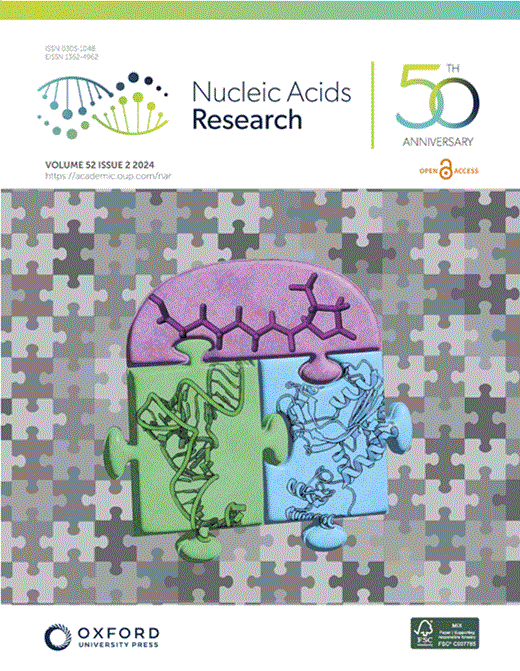Analysis of natural structures and chemical mapping data reveals local stability compensation in RNA
IF 16.6
2区 生物学
Q1 BIOCHEMISTRY & MOLECULAR BIOLOGY
引用次数: 0
Abstract
RNA molecules adopt complex structures that perform essential biological functions across all forms of life, making them promising candidates for therapeutic applications. However, our ability to design new RNA structures remains limited by an incomplete understanding of their folding principles. While global metrics such as the minimum free energy are widely used, they are at odds with naturally occurring structures and incompatible with established design rules. Here, we introduce local stability compensation (LSC), a principle that RNA folding is governed by the local balance between destabilizing loops and their stabilizing adjacent stems, challenging the focus on global energetic optimization. Analysis of over 100 000 RNA structures revealed that LSC signatures are particularly pronounced in bulges and their adjacent stems, with distinct patterns across different RNA families that align with their biological functions. To validate LSC experimentally, we systematically analyzed thousands of RNA variants using DMS chemical mapping. Our results demonstrate that stem folding, as measured by reactivity, correlates with LSC (R² = 0.458 for hairpin loops) and that instabilities show no significant effect on folding for distal stems. These findings demonstrate that LSC can be a guiding principle for understanding RNA function and for the rational design of custom RNAs.自然结构分析和化学作图数据揭示了RNA的局部稳定性补偿
RNA分子采用复杂的结构,在所有生命形式中执行基本的生物学功能,使其成为治疗应用的有希望的候选者。然而,我们设计新RNA结构的能力仍然受到对其折叠原理的不完整理解的限制。虽然像最小自由能这样的全局指标被广泛使用,但它们与自然发生的结构不一致,也与既定的设计规则不相容。在这里,我们引入了局部稳定性补偿(LSC),这是一种RNA折叠由不稳定环与其稳定相邻杆之间的局部平衡控制的原理,挑战了对全局能量优化的关注。对超过10万个RNA结构的分析显示,LSC特征在凸起及其邻近的茎中特别明显,在不同的RNA家族中具有不同的模式,与它们的生物学功能相一致。为了在实验上验证LSC,我们使用DMS化学图谱系统地分析了数千种RNA变体。我们的研究结果表明,通过反应性测量的茎折叠与LSC相关(发夹环的R²= 0.458),并且不稳定性对远端茎的折叠没有显着影响。这些发现表明,LSC可以成为理解RNA功能和合理设计定制RNA的指导原则。
本文章由计算机程序翻译,如有差异,请以英文原文为准。
求助全文
约1分钟内获得全文
求助全文
来源期刊

Nucleic Acids Research
生物-生化与分子生物学
CiteScore
27.10
自引率
4.70%
发文量
1057
审稿时长
2 months
期刊介绍:
Nucleic Acids Research (NAR) is a scientific journal that publishes research on various aspects of nucleic acids and proteins involved in nucleic acid metabolism and interactions. It covers areas such as chemistry and synthetic biology, computational biology, gene regulation, chromatin and epigenetics, genome integrity, repair and replication, genomics, molecular biology, nucleic acid enzymes, RNA, and structural biology. The journal also includes a Survey and Summary section for brief reviews. Additionally, each year, the first issue is dedicated to biological databases, and an issue in July focuses on web-based software resources for the biological community. Nucleic Acids Research is indexed by several services including Abstracts on Hygiene and Communicable Diseases, Animal Breeding Abstracts, Agricultural Engineering Abstracts, Agbiotech News and Information, BIOSIS Previews, CAB Abstracts, and EMBASE.
 求助内容:
求助内容: 应助结果提醒方式:
应助结果提醒方式:


